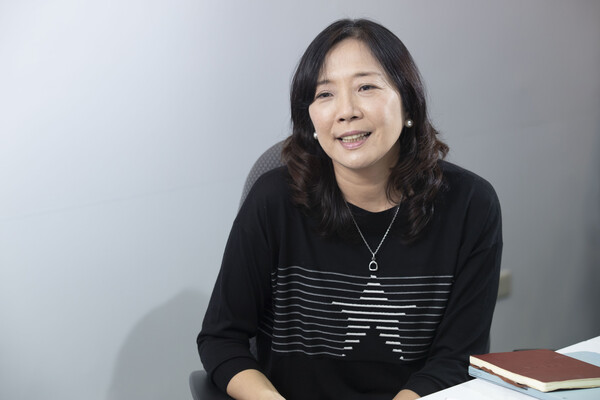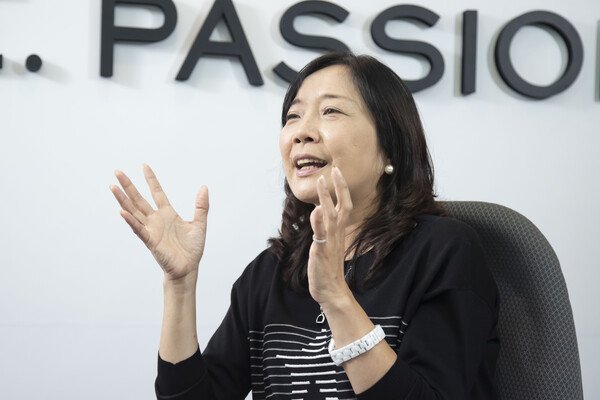SINGAPORE -- AbbVie Asia Pacific is making a strategic presence in Asia with its robust portfolio and a clear mission to make a remarkable impact on patients' lives.
Operating out of Singapore, the company's regional office navigates complex healthcare landscapes across different Asian markets, aiming for sustainable growth and expanded reach.
With a focus on completing the integration process with Allergan, AbbVie continues to diversify its product offerings and enhance its innovative capabilities, demonstrating its dedication to addressing diverse health challenges in the region.

Peggy Wu, the vice president of AbbVie Asia, leads this growth and expansion.
Wu, based in Singapore, the regional hub of AbbVie's operations in Asia, oversees 15 Asian markets, including Korea, Taiwan, India, and Southeast Asian countries.
In a recent interview with Korea Biomedical Review, Wu shared her insight into AbbVie's strategic direction in the region, its latest merger, product portfolio, and the company's dedication to patient-centricity.
Navigating the merger between AbbVie and Allergan
Asked about the recent merger completion between AbbVie and Allergan, Wu confirmed that integrating local operation models across Asia is progressing.
"With the merger completed and local operation model (OMI) implemented in several countries, including Korea, Malaysia, Thailand, Philippines, and Singapore, we are optimistic about completing the integration process in the remaining countries this year," she said.
Wu elaborated on her strategic focus in light of the merger.
"I believe that the merger will enhance AbbVie's ability to deliver on its mission, which is to make a significant impact on more people's lives," she said. "We expand and diversify our product portfolio with new therapeutic areas that allow us to remain focused on continuing our investment in discovering and developing innovative medicines to solve tough health challenges and better serve patients."
She added that this also helps the company focus on building long-term sustainable growth by maintaining its position as an industry leader and advancing our robust pipeline well into the future.
According to Wu, with the merger, AbbVie now has more than 30 brands across more than 60 indications. It is a leader in immunology, medical aesthetics, HCV, eye care, neurosciences, and hematologic oncology.
The VP for Asia also stressed that AbbVie's Asia office had become a role model of a region within the company for the strong performance and the people and culture development.
"We are taking advantage of the important milestones of celebrating the 10th anniversary of the company's establishment and the OMI integration process this year to help connect our employees from different functions with each other to build a 'One AbbVie' culture," she said.
Despite the challenges of Asian markets, Wu is confident in AbbVie's ability to navigate complex healthcare systems and regulatory landscapes.
"Asia is a diverse and dynamic region with different healthcare systems and regulations consisting of self-pay and reimbursed markets," Wu said. "These are great opportunities that we can tap into and manage sustainable growth as a portfolio throughout different situations and needs of each market with our innovative products and solutions at different lifecycles and leadership positions."
The common challenge that AbbVie faces is how it can help expand patient access to innovative drugs with limited resources in the health system, she added.
As a solution, Wu explained that the company had established a strong partnership with the key stakeholders in pursuit of better treatment outcomes and patient access as shared goals in each market.
"We continue to work closely with them in the healthcare system to elevate awareness of diseases, advance diagnosis, treatment, and adherence, and create solutions to improve patient access and outcome," she said.

Robust portfolio and future focus
Despite the loss of exclusivity (LOE) for Humira, AbbVie's flagship product, Wu explained that the company continues to show strength in the autoimmune disease market with the successful launch of Skyrizi and Rinvoq in major markets in Asia.
"The company plans to build on these products' leadership and expand indications into psoriatic diseases, rheumatoid arthritis, atopic dermatitis, ankylosing spondylitis, ulcerative colitis, and Crohn's disease in the Asian market," she said.
Looking to the future, Wu expressed that beyond immunology, AbbVie is also focusing on bringing oncology and specialty care treatments to the Asian market.
"For example, in the hematologic oncology field, we have launched Venclexta, a chronic lymphocytic leukemia (CLL) and acute myeloid leukemia (AML) treatment," she said. "The treatment is the first and only-in-class, oral B-cell lymphoma-2 (BCL-2) inhibitor, helping them achieve and remain in remission."
Regarding Humira's LOE and biosimilars' launch, Wu asserts that Humira will remain a strong treatment option due to its proven track record and vast clinical experience.
"Humira is an important part of AbbVie's legacy in immunology, and AbbVie believes that the drug will remain strong as an important biologic treatment option for patients who need it to fight against more than 16 different immune-mediated conditions in Asia," Wu said.
Wu also stressed that AbbVie's experience with Humira allowed them to develop and launch Skyrizi and Rinvoq rapidly.
Patient-centricity at the core
Wu emphasized that patient-centricity is more than just a buzzword at AbbVie.
"For me and my team, it means putting patients at the center of our work, from drug discovery and development to ensuring access to medicine," she said. "For example, AbbVie partners with patient advocacy groups to ensure the patient's voice are heard."
When asked about successful case studies highlighting AbbVie's patient-centric approach, Wu referred to the patient immersion program.
"The program helps our employees experience a glimpse of a patient's life, listen to the patient's health journey and learn the pain points and challenges they face," she said. "Our patient engagement activities help us to understand their perspectives, disease burden, unmet needs, signs and symptoms, and impact on their daily life."
Wu also stressed that women's empowerment and gender diversity have become crucial focus areas for AbbVie, particularly in its Asian operations.
"More than half of the Asian leadership team is women, coming from a myriad of ethnic backgrounds, spanning countries like Taiwan, India, Korea, Singapore, China, and Malaysia," she said. We emphasize providing ample opportunities for female leadership and continue encouraging efforts to increase female representation."
Being a female leader, Wu stressed that she understands the importance of stepping up and being a role model in the workplace and at home.
"As a result, AbbVie fosters an inclusive culture where our employees are encouraged to voice their opinions boldly and be authentic," she said. "AbbVie Asia has also established an employee resource group for women called 'Ladies UNited in Asia,' an initiative that empowers the region's female employees to maximize their potential."
Asked about the advice she would offer aspiring female leaders, she had three main points --be brave, be a role model, and lean on your support systems.
"Be brave, bold, and fearless. That's the mantra I want to share with women," she said. "At AbbVie, we provide various opportunities for our employees to explore different roles across countries, enriching their leadership skills and professional competencies."
Related articles
- APAC CVD Alliance to steer the fight against cardiovascular diseases in the region
- Roche Diagnostics to advance healthcare through open innovation
- Samsung Bioepis' Humira biosimilar gaining traction in US market, totaling 4 US payers
- AbbVie's Skyrizi expands indications to Crohn's disease
- Rinvoq’s rapid pain relief sparks optimism for ankylosing spondylitis patients
- Health insurance coverage expanded for Rinvoq to treat ulcerative colitis, Crohn's disease in Korea
- Palmoplantar pustulosis patients pin hope on Skyrizi’s approval

